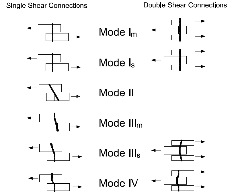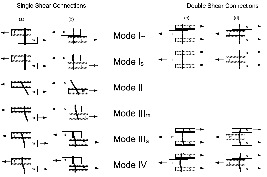This January I wrote a blog post, Spanning the Gap, which discussed two methods for establishing allowable loads for fasteners installed through gypsum board – testing or calculations using American Wood Council’s Technical Report 12. AWC recently published a new version of TR12 and this week’s guest blogger, Lori Koch, Project engineer with AWC, authored this post to explain some of the new features of TR12.
Lori Koch graduated from Penn State University with a BS in Civil Engineering, and from Clemson University with an MS in Civil Engineering. After graduating from Clemson, Lori worked as a forensic structural engineer doing field inspections, job site monitoring for compliance with project specifications and structural analysis on existing structures. She then enrolled at Virginia Tech pursuing a Master of Forestry degree in the Department of Wood Science and Forest Products (now called the Department of Sustainable Biomaterials). Her research at Virginia Tech involved connections for fall-protection harnesses for residential roofers and construction workers. After graduation in 2012, Lori started working with the American Wood Council as a Project Engineer. Her work at the AWC ranges from assisting in codes and standards development, answering HelpDesk inquiries, outreach and educational opportunities and just about anything that can help promote the use of wood in safe and sustainable buildings.
The American Wood Council’s Technical Report 12 – General Dowel Equations for Calculating Lateral Connection Values (TR12) was recently updated. TR12 provides background and derivation of the mechanics-based approach for calculating lateral connection capacity used in the National Design Specification® (NDS®) for Wood Construction for connections using dowel-type fasteners including bolts, lag screws, wood screws, nails, spikes, and drift pins. It also provides additional flexibility and broader applicability to the NDS provisions, including design provisions for connections with gaps. The 2014 version of TR12 provides new information on design of wood members attached to hollow members and design of driven-fasteners with tapered tips.
The previous version of TR12 presented mechanics-based derivations of lateral yield equations for solid members joined with a dowel-type fastener (Figure 1). Following the same approach, yield equations were derived for connections between solid members and members with hollow cross sections (Figure 2). These new equations are presented in tabular form for connections with a solid main member and hollow side member(s) and connections with a hollow main member and solid side member(s). Derivations of these yield equations are also presented in the report.


The 2012 NDS section 11.3.5.2 adopted new provisions for driven fasteners with tapered tips. For a driven fastener where the penetration length includes the length of the tapered tip, the dowel bearing length is taken as the length of penetration minus one half of the length of the tip. TR12 provides derivation of yield equations that account for the full penetration length, including the reduced bearing capacity at the tip. Design values using these yield equations are then compared against the simplified approach in the 2012 NDS Results of that comparison are contained in a new example included in TR12, and show excellent agreement between the simplified and exact models.
There are many applications where TR12 can be used by engineers to expand upon the NDS connection provisions. Previous versions of TR12 have provided designers with the ability to design connections with a gap between the members. The new provisions in TR12 can be used to calculate the connection capacity of a hollow steel tube connected to solid lumber, where the tube can be either the main member or side member(s).
The recent updates to TR12 will provide increased flexibility for designers while providing additional background information on the derivation of the connection equations. The report is available for free download on the AWC’s webpage at http://www.awc.org/publications/TR/index.php.
What are your thoughts on these updates to TR12? Let us know in the comments below.




1 thought on “2014 Updates to Technical Report 12”
Comments are closed.